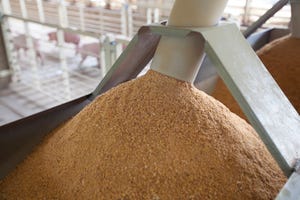Serving the ASEAN region can be challenging geographically but also due to a wide range of import requirements that vary from country to country.
September 3, 2019

The U.S. Meat Export Federation recently conducted its first-ever regional product showcase in Southeast Asia, a promising market for U.S. red meat. Last year U.S. beef exports to countries in the Association of Southeast Asian Nations reached $275 million and U.S. pork exports were nearly $170 million, but the region still has untapped potential.
According to U.S. Meat Export Federation trade analyst Jessica Spreitzer, who just returned from Singapore, one of the challenges for U.S. exporters is that prospective customers in the ASEAN are spread across many small countries. The USMEF product showcase allowed exporters to meet face-to-face with many buyers at a single location in Singapore.
“This was a way to bring buyers from all over the region to meet with some of our members and be able to showcase their products and have one-on-one meetings with the buyers, so we had 13 members participate and then we also have buyers from countries all over the region from Singapore, Indonesia, Malaysia, Cambodia, the Philippines and Vietnam,” Spreitzer says. “It was a two-day event and then some of the team continued on to Indonesia and had additional meet-the-buyers sessions there as well.”
Serving the ASEAN region can be challenging geographically but also due to a wide range of import requirements that vary from country to country, so the USMEF event included an educational aspect as well.
“It can be a little bit difficult with that region. There is a lot of opportunity for beef and pork, so one of the presentations at the seminar was actually focused on some of the requirements to bring product into those markets from the U.S.,” Spreitzer says.
Travis Arp, USMEF senior director of export services and market access, presented on the technical requirements that govern U.S. red meat entering ASEAN countries, while Spreitzer provided an overview on both the U.S. market supply as well as global red meat trade, production and consumption trends.
“Looking at how China is driving global trade on both the pork side, especially now with ASF, but also on the beef side as well, so talking about how that affects their markets and then looking forward at some of the growth that we've seen in the ASEAN region and where we expect to see continued growth there as per capita consumption increases,” Spreitzer says.
Source: U.S. Meat Export Federation, which is solely responsible for the information provided, and wholly owns the information. Informa Business Media and all its subsidiaries are not responsible for any of the content contained in this information asset.
About the Author(s)
You May Also Like



